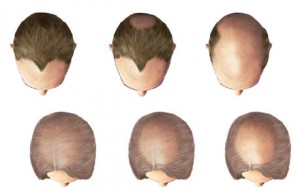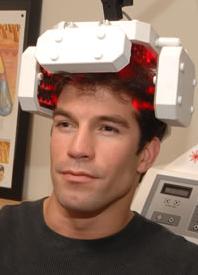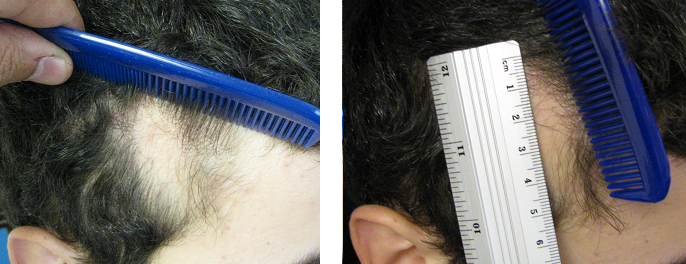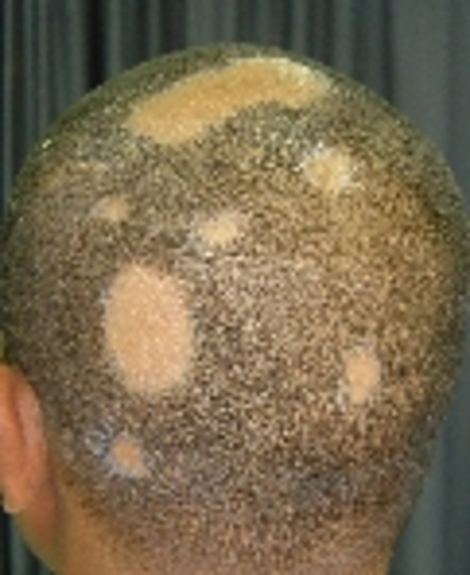Posts Tagged ‘hair loss’
Tuesday, November 30th, 2010
Q:
Good Afternoon Dr. Mohebi,
I recently was recommended to go on a medication for body building purposes by my trainer. The medication that I am planning on starting is called ANAVAR (an anabolic steroid). Because I am currently taking Propecia, as prescribed by you, I just wanted run ANAVAR by you to make sure it would be OK to take in conjuction with Propecia.
I appreciate all of your help, Thanks!
A:
Anavar (oxandrolone) is a weak androgen and is considered an anabolic steroid. It is indicated as adjunctive therapy to enhance weight gain after weight loss due to an extensive surgery, infectious disease, trauma and so on. Anavar has also been prescribed to some patients who for no reason fail to gain weight despite of  proper nutrition and work out schedules. It may also be used to maintain normal weight or to prevent the catabolism due to prolonged administration of corticosteroids. proper nutrition and work out schedules. It may also be used to maintain normal weight or to prevent the catabolism due to prolonged administration of corticosteroids.
There have been some online reports of hair loss with Anavar’s use and some exagerated hair loss reports in patients who take both Propecia (finasteride) and Anavar (oxandrolone) in conjunction. Although my personal searches in medical publications have never revealed any studies supporting this information, reports can be found online by its claimed users.
Overall, my general recommendation is: unless there is a strong medical indication for its use, people with any evidence of male patterned baldness should stay away from anabolic steroids. Although you may find some anabolic steroids over the counter, your family doctor should always be involved and aware of any anabolic steroids that you take as part of your body enhancing plan.
Tags: anabolic steriods and hair loss, Anavar, finasteride, hair loss, oxandrolone, propecia
Posted in hair loss complications, hair loss medication, hair loss products, hair transplant, men hair restoration, Uncategorized | No Comments »
Tuesday, January 19th, 2010

Q:
Hey Dr. Parsa Mohebi,
I’m grateful you took time out to see me on Saturday. The letter that gave a summary of what we talked about was very thorough and I just wanted to say thanks for that.
Since the last time we met, I did some of my own research and came up with a few queries:
1) When it comes to giving a name to my hair loss pattern, is Alopecia the correct way to describe it?
2) Would a Cortizone shot be an option for me?
3) Is laser therapy OK?
4) If I happen to use minoxidil, I’m wondering if it has to be 2% or would a higher percentage result in more hair growth and faster hair growth?
5) I was told to receive a complete medical evaluation, do you know of a doctor I can go to? I want someone I can trust.
Thanks again for taking the time to see me and also to accommodate my questions.
Sincerely,
Stephen
-
A:
Hello Stephen,
I’ve provided answers to your questions in chronological order.
1) When it comes to giving a name to my hair loss pattern, is Alopecia the correct way to describe it?
Alopecia, literally, would be defined as hair loss. There are many different types of alopecia or hair loss, such as male patterned alopecia or female patterned alopecia or alopecia cicatricial. I believe the pattern on your head is a male pattern since hair was lost in the frontal area as you kept hair on the donor area intact. This is the reason you may be a potential candidate for a hair transplant since your medical evaluation stated that you’re not medically treatable for hair loss.
2) Would a Cortizon shot be an option for me?
Absolutely not. But steroid shots are sometimes used for Alopecia Areata (AA), which is an autoimmune disorder. Alopecia Areata is a hair loss condition with patchy hair loss spots. Your condition is not Alopecia Areata.
3) Would you consider laser therapy?
I do not recommend laser therapy for hair loss in the form of laser comb or laser machines because of the lack of solid medical evidence that support their effectiveness at this time.
4) If I were to use Monoxidil, does it have to be 2% or a higher percentage would yield more and faster hair growth?
You can start with 2% and then you need to be re-evaluated in six to 12 months and a treatment plan might need to be adjusted at that time.
5) you recommended a complete medical evaluation, could you please recommend someone that you trust?
Any good internist or endocrinologist could follow through with the lab works that you need. Our letter includes the list of medical conditions that should be considered and lab works to rule out those women like you who have hair loss. You can share my letter with any good internist or endocrinologist and he or she should be able to follow through with your lab result and treat any treatable conditions that could possibly be found.
Have a great day,
Tags: alopecia areata, hair loss, hair loss pattern, hair loss treatment, laser therapy, laser therapy for hair loss, minoxidil
Posted in Bakersfield hair transplant, California hair transplant, hair loss medication, hair loss products, hair transplant, men hair restoration, Newport Beach hair transplant, Orange County hair transplant | No Comments »
Friday, January 15th, 2010

Not too long ago, consumer columnist David Lazarus, in a Los Angeles Times story, mentioned he had visited an open house at a hair transplant office and, to his surprise, saw that there were a lot of men who showed up. For him, it was unexpected. Lazarus said he had a conversation with the owner of the hair transplant center and learned that, in this fragile economy, a lot of men who are shopping for a hair transplant are thinking that it will better their job opportunities by having a full head of hair.
According to a CNN report, findings have shown that people who are better looking, or are slim (vs. fat), or who are of a younger age tend to have better success in the nation’s economy. These “lookers” bring in more money, have a better chance of moving up in the company, and tend to be treated more graciously. Albeit the results of this study may be a bit disturbing, it may be a somewhat accurate reflection of our society.
When we take into account these conclusions, it ought to come as no surprise that there are balding men in America who really hold fast to the idea that they can boost their chances of landing a job by sporting a full head of hair. It might just end up being a mental edge, or a self-esteem enhancer, for these adult males to give a good impression during their interviews.
All things considered, in my humble view, the crucial aspect of a job interview is a how a potential employee presents himself to his interviewer. The responses she gives, her demeanor, attitude about previous employers, and overall impression.
But, these days, some men believe it wouldn’t decrease their chances to have a full head of hair. In addition, due to the slumping economy, a hair transplant cost is at an all-time low for high-quality hair restorations. If there ever was a time to get a hair transplant for those who, under different circumstances wouldn’t get one, now is the time.
Tags: balding men, hair loss, hair loss and job prospects, hair restoration, hair transplant, job prospects, men hair loss
Posted in Bakersfield hair transplant, California hair transplant, hair transplant, men hair restoration, Newport Beach hair transplant, Orange County hair transplant | No Comments »
Tuesday, January 12th, 2010

In the past 30 years, alternate types of therapy for enhancing wound repair have been mentioned. For this entry, I wanted to talk about the cutting-edge areas of stem cell therapy and gene therapy in wound healing. When it comes to gene therapy, it was first put into practice for treating congenital defects. Now, it is a fresh alternative for affecting wound repair. To speed up the process of wound closure, genes encoded for growth factors or cytokines revealed the greatest potential.
Most gene delivery systems have roots in viral transfection, naked DNA application, high pressure injection, or liposomal vectors. Embryonic and adult stem cells posses an extended self-renewal ability with the capacity to differentiate into various tissue types. Different types of sources, such as bone marrow, peripheral blood, umbilical cord blood, adipose tissue, skin and hair follicles, have been used to separate stem cells to speed up the healing response of acute and chronic wounds.
Not too long ago, the grouping of gene and stem cell therapy has come to the forefront as a potential option to care for chronic and acute wounds.
For potential hair transplant patients, this breaking development about gene and stem cell therapy in hair restoration is fantastic news because a rapid healing from stitches in the donor area would make for a much quicker and painless procedure. There are all kinds of different types of hair loss, but, if a hair loss sufferer undergoes a hair transplant, it would be imperative that his stitches would heal quickly.
Source information was provided by the following authors: Branski LK, Gauglitz GG, Herndon DN, Jeschke MG.
Department of Surgery, The University of Texas Medical Branch and Shriners Hospitals for Children, Galveston, TX 77550, United States.
Tags: donor scar, gene therapy, hair loss, hair restoration, hair transplant, stem cell therapy, wound healing, wound treatment, wounds
Posted in Bakersfield hair transplant, California hair transplant, hair transplant, men hair restoration, Newport Beach hair transplant, Orange County hair transplant | No Comments »
Saturday, December 19th, 2009

Hair transplant surgery has evolved in the last 10 years thanks to microscopic techniques and research which elucidated the mechanism of hair loss and hair restoration surgery. We now can transplant with maximum natural results. We also increased the number of grafts which could be safely removed and harvested during a single hair transplant procedure. Mega session hair transplants have been a very hot topic and an interesting idea for many people who have a large balding area that cannot simply be covered with anything less than 3000-4000 grafts.
At the offices of US Hair Restoration, we evaluate every patient for the quality of donor hair and scalp which will determine the number of grafts that could be safely harvested and transplanted in one surgery. Many people who are getting their first surgery can have over 3000 grafts. We have numbers of up to 5000 grafts, too.
Laser hair restoration is a pretty new concept and unfortunately we still do not have enough solid research published in peer reviewed journals documenting its effectiveness. There have been some results in smaller studies with some effect. However, I would rather wait on that until we have more research-proven documents in that regard.
You need to be evaluated for your donor potential and can consider surgery after that. US Hair Restoration has special hair transplant travel reimbursements for patients like you who have to fly from other cities. We also provide hotel and transportation to and from the hotel for anyone who has to commute more than 50 miles to get to our hair restoration center.
Tags: hair loss, hair restoration, hair transplant, hair transplant cost, hair transplant travel, hair transplant travel reimbursement, laser hair transplant, laser hair treatment
Posted in Bakersfield hair transplant, California hair transplant, hair transplant, men hair restoration, Newport Beach hair transplant, Orange County hair transplant | No Comments »
Thursday, November 19th, 2009

Q:
Not too long ago, I had a hair transplant (using FUE). Things were OK until several months after the transplant. I spent some time having fun in the sun, and it was maybe close to triple digit degrees outdoors. As soon as I got back to my house, I noticed my scalp in the transplanted area had turned white. It looked like the skin on my head had been scorched. But I didn’t think it was a big deal and I kept on using the Minoxidil with Betaderm spray, which my doctor highly recommended.
A few weeks later, the top of my head (which had been grafted) began to peel and the skin fell off (like a sun burn). And there were a few transplanted hairs which fell off as well, with the skin. This really alarmed me. After about eight weeks, the scalp seems to have healed, although there is some redness in places; but, overall, it seems to be OK. But, I’m a bit worried about the condition of my after-playing-in-the-sun scalp. I know it was probably a sun burn, but I just hope my grafts weren’t damaged beyond repair. I’ve done some research on skin consequences of sun burn, but I wonder if the grafts can ever fully recover from the exposure to the ultra-violet rays. I know if my skin becomes more tan, it’s OK. But about my grafts, I’m really concerned about them.
I need answers, doc.
Yours truly,
A beach bum with a hair transplant
A:
Hey beach bum,
Skin and scalp which has been exposed to the sun’s rays for long periods of time damage both native hairs and transplanted hair. The consequences can be especially harmful if a person who has had a hair transplanted is not under an umbrella or is not wearing a hat of some sort. The scalp skin could be damaged that way. It is best to stay out of the sun after a few minutes, at most. For the first six months, hair transplant patients may want to use sunscreen or wear a hat to prevent hair loss and to guard against permanent damage to hair follicles.
For those who don’t like to wear hats or other types of protective head wear ought to guard their hair as if their financial stability depended on it. Make sure your hair density increases to the point in which your hair follicles cover your entire scalp and so the scalp skin is not exposed to the sun’s scorching rays (especially during summer).
I can’t give you a verdict on whether your newly transplanted hair is permanently damaged. I’m sure I don’t have to tell you this, but I’ll say it anyway in case there are people reading this blog who are in a similar situation: from now on, be very careful about your scalp’s sun exposure. And just kick-back and wait a while to see if the damaged hair grows back.
Remember, after hair transplant care is very important, if not crucial to the longevity of your hair restoration results.
Tags: after hair transplant, complications, fue, hair loss, hair transplant surgery, men hair loss, sun exposure
Posted in Bakersfield hair transplant, California hair transplant, hair transplant, men hair restoration, Newport Beach hair transplant, Orange County hair transplant | No Comments »
Saturday, November 14th, 2009

In the latest issue of the Journal of Internal Medicine, a new research study was published: “A Rare Complication: New Hair Growth Around Healing Wounds.” This study is related to Dr. Mohebi’s personal research at Johns Hopkins Medical Institute on gene therapy techniques and wound healing and how it affected the growth of mice hair.
The journal study was about a person who had hair growth surrounding a healing wound at Guangxi Medical University in Nanning, China.
The doctors involved in the study mention an incident in which hair growth occurred around a wound during the process of wound healing. Hair growth after wound healing is an atypical occurrence. This is the first time such an event had ever been recorded in scientific literature.
The doctors concluded that the wounds damaged the hair follicles and epidermis, but that it was possible for both to repair themselves if there was a suitable physical and chemical micro-environment. The doctors say that this new hypothesis may very well lead to new methods of managing hair loss, tissue engineering, and the regeneration of other organs.
At the laboratory of Johns Hopkins Medical Institute, and as part of my overall research, I did a major investigative study on hair growth as a byproduct of wound healing. On a few rats, after witnessing wound healing, to my delight, I found that some gene therapy techniques stimulated the hair growth.
My attention was on hair growth only and, coincidentally, our results matched other hair growth-wound healing studies, during 2005 to 2006. At the University of Pennsylvania, Dr. Cotsarelis, along with his contemporaries, first made public a study on the relationship between wound healing and hair growth through activation of the molecular pathway WNT.
Other similar studies have called attention to the fact that hair restoration through tissue engineering, hair multiplication, and gene therapy might one day happen and that we just may have a breakthrough a lot sooner than we expected all these years.
Parsa Mohebi, M.D.
Medical Director
US Hair Transplant
Tags: gene therapy, hair growth, hair loss, hair restoration, wound healing
Posted in California hair transplant, hair transplant, men hair restoration, women hair loss | No Comments »
Saturday, October 17th, 2009
 Temporal triangular alopecia also known as TTA is a congenital hair loss condition in which the patient had a limited balding area on his temples. The condition is assumed to be congenital and is generally obvious since birth. The balding spot may contain normal numbers of hairs, but they are all vellus and generally not visible. Temporal triangular alopecia also known as TTA is a congenital hair loss condition in which the patient had a limited balding area on his temples. The condition is assumed to be congenital and is generally obvious since birth. The balding spot may contain normal numbers of hairs, but they are all vellus and generally not visible.
Congenital temporal triangular alopecia is considered a nonscarring alopecia and if biopsied should not be mistaken for Cicatricial alopecia. TTA respond well to hair transplantation and there are some studies that patient were treated with hair transplant surgery successfully with adequate coverage.
The condition could be treated by a hair restoration surgery at any age. We at the California offices of US Hair Restoration offer treatments for congenital temporal trangular alopecia.
Tags: congenital triangular alopecia, hair loss, hair loss treatment, hair transplant surgery, patchy hair loss, temporal triangular alopecia, TTA
Posted in California hair transplant, hair transplant | No Comments »
Wednesday, October 7th, 2009
 In a recent email sent to our office from a recent patient, he writes in regards to his scalp evaluation and regarding Propecia (Finasteride). He asks, “Could finasteride worsen the hairline due to the rise of testosterone?” and, “if there’s any safe and minor treatments to slow the progress of maturation or reverse it that you would recommend at this stage?” In a recent email sent to our office from a recent patient, he writes in regards to his scalp evaluation and regarding Propecia (Finasteride). He asks, “Could finasteride worsen the hairline due to the rise of testosterone?” and, “if there’s any safe and minor treatments to slow the progress of maturation or reverse it that you would recommend at this stage?”
Early stages of male patterned hair loss may not always be obvious enough to be differentiated from normal levels of miniaturized hair during scalp microscopic evaluation. Propecia (finasteride) is still the most recommended hair loss medication to prevent additional balding. Some patients have even been prescribed Propecia without proper diagnosis or documentation of their hair loss condition making it difficult to tell if they have gotten better since they started or worsened.
Propecia (finasteride) is designed to block DHT (Dihydrotestosterone) which is the main cause of male patterned hair loss. With this in mind, finasteride cannot deteriorate your hair loss or cause changes in the hairline. Maturation of the hairline is normal in all men and should not be confused with balding. We also do not have any further recommendation on medications that can stop the maturation of the hairline.
Tags: beverly hills, Beverly Hills Hair Restoration, finasteride, hair line, hair loss, hair transplant surgery, hairline maturation, hairline recession, male patterned hairloss, men hair loss, miniaturization, testosterone, young patients with hair loss
Posted in Bakersfield hair transplant, California hair transplant, hair transplant, men hair restoration, Newport Beach hair transplant, Orange County hair transplant | No Comments »
Saturday, September 5th, 2009
 Alopecia Areata (AA) is an autoimmune hair loss condition. It presents itself in the form of patchy hair loss on the scalp or other areas where hair exists. Some have questioned if AA can also be triggered by emotional stress. It has been discussed in some medical journals but the exact mechanism has never been explored. There has been a study conducted and published on the relationship between stress and the pathogenesis of alopecia areata. This was done by subjecting AA-affected and normal lab mice to ether anesthesia (stress) through restraining the animal. Alopecia Areata (AA) is an autoimmune hair loss condition. It presents itself in the form of patchy hair loss on the scalp or other areas where hair exists. Some have questioned if AA can also be triggered by emotional stress. It has been discussed in some medical journals but the exact mechanism has never been explored. There has been a study conducted and published on the relationship between stress and the pathogenesis of alopecia areata. This was done by subjecting AA-affected and normal lab mice to ether anesthesia (stress) through restraining the animal.
The mice with alopecia areata had a marked increase in hypothalamic-pituitary-adrenal tone and activity centrally and peripherally in the skin and lymph nodes. Plasma corticosterone, adrenocorticotropic hormone, and estradiol levels were determined in this study as indicator or stress level, whereas gene expression in brains, lymphoid organs, and skin was measured by quantitative RT-PCR for corticotropin-releasing hormone, arginine vasopressin, proopiomelanocortin, glucocorticoid receptor, mineralocorticoid receptor, corticotropin-releasing hormone receptor types 1 and 2, interleukin-12, tumor necrosis factor-alpha, and estrogen receptors type-1 and type-2.
Compared to normal mice, there was an altered interaction seen between the adrenal and gonadal axis proving that the stress level in those animals was in fact higher. Stress also caused changes in the activity of the hypothalamus pituitary axis in the mice with AA.
In addition, animals with AA had significantly blunted corticosteroid and ACTH responses to acute ether stress (physiological stressor) and a deficit in habituation to repeated restraint stress (psychological stressor). These findings further suggest that altered brain responses caused by stress may be associated with the occurrence of alopecia areata, proving the hypothesis that stress plays an important factor.
Treatment of AA is done through observation of the patient and, in some cases, steroid injections can also prove useful. These treatment options have shown some improvement in those who have extensive types of AA like Alopecia Totalis. We do not recommend any patient to get hair transplant surgery if they have active AA since the chance of losing the newly transplant hair is very likely.
Although AA is not genreally treated with hair restoration, we at our offices of US Hair Restoration in LA, BH and Orange County visit and treat patients of AA in a regular basis.
Tags: AA, ACTH, adrenocorticotropic hormone, alopecia areata, alopeica totalis, arginine vasopressin, Avp, CORT, corticotropin-releasing hormone, estradiol, glucocorticoid receptor, hair loss, hair loss innovations, hair transplant, hair transplant surgery, lymphoid organs, mineralocorticoid receptor, proopiomelanocortin, RT-PCR, sress level
Posted in Beverly Hills hair transplant, California hair transplant, Los Angeles Hair Transplant, Orange County hair transplant | No Comments »
|
|
 proper nutrition and work out schedules. It may also be used to maintain normal weight or to prevent the catabolism due to prolonged administration of corticosteroids.
proper nutrition and work out schedules. It may also be used to maintain normal weight or to prevent the catabolism due to prolonged administration of corticosteroids.








